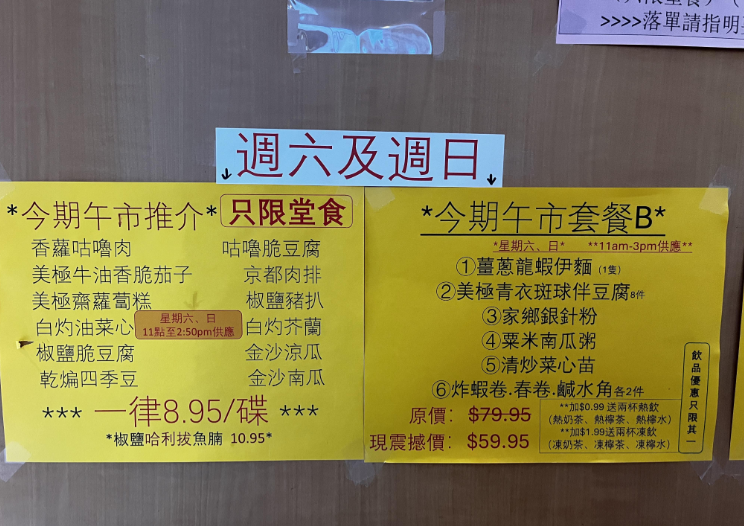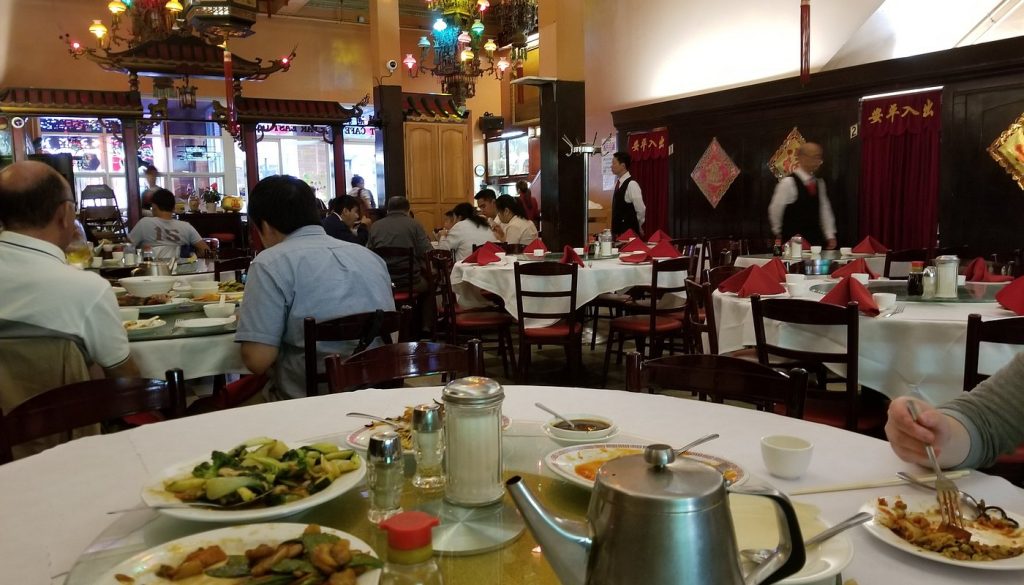A Late-Winter Memory and a Lifelong Love Affair with American Chinese Cuisine
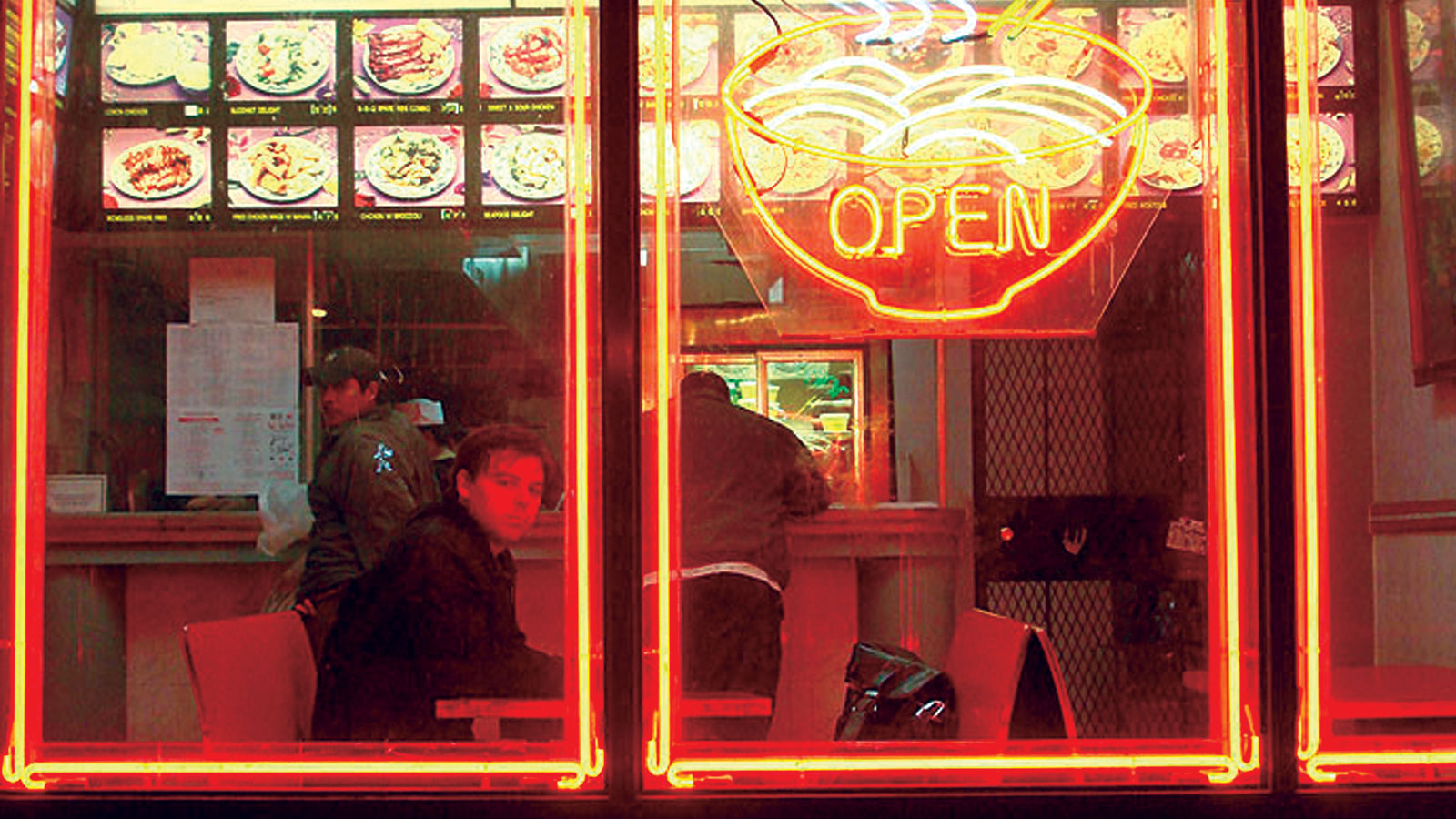
I remember that night so vividly: I was about fifteen years old, my sister seventeen, and our parents still young themselves, and the world seemed naïve and full of possibility. The day had been cold, damp, and foggy—one of those late-winter evenings when the chill seems to seep right through your coat and settle in your bones. Despite the dreary weather, or perhaps because of it, the four of us were in high spirits. My mother and father had decided to treat us to a late-night movie, an unplanned indulgence that made the night feel even more special.
There we were, huddled together in the half-empty discount Parma Theater — now gone to an infamous and tragic fire — the warmth of the cushioned seats enveloping us as we shared an enormous tub of buttery popcorn, our fingers grazing as we reached in at the same time.
The neon glow of the screen bathed our faces in flickering light, and the smell of artificial butter and soda syrup clung to the air. As the credits rolled and the overhead lights brightened, we stretched in our seats, yawning and rubbing tired eyes—only to realize, all at once, just how ravenous we were. My dad turned to my mom with that sweet look in his eye and said, “Hong Kong Buffet?”
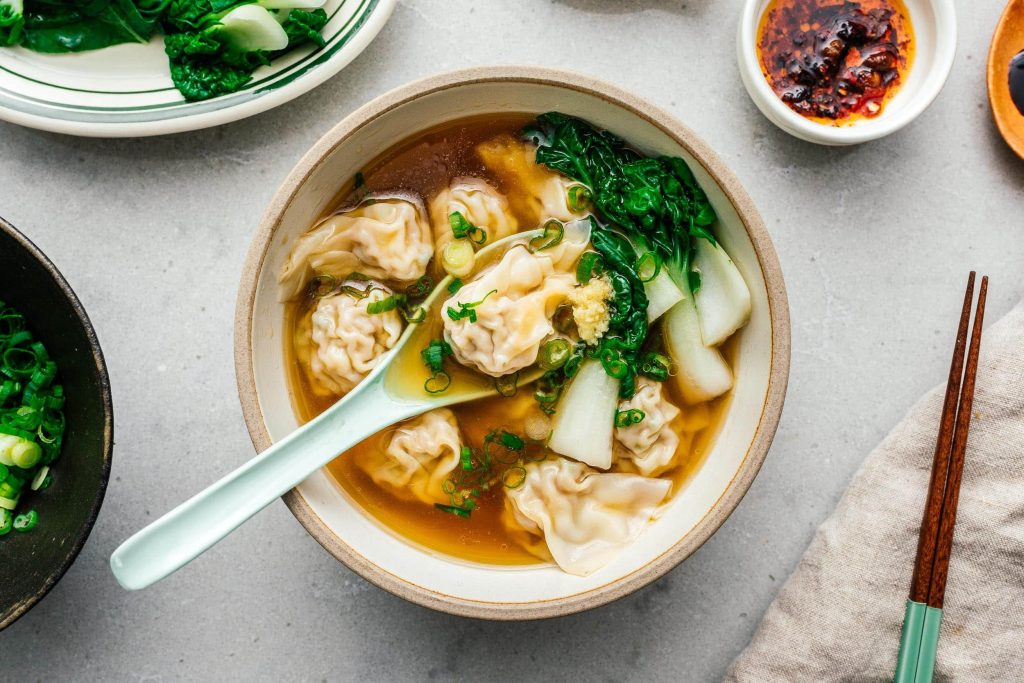
Not just any Chinese restaurant, mind you, but Hong Kong Buffet (now an expanded restaurant called Kumo) —a local all-you-can-eat spot that had become something of a second home for us on nights like these. It was a place that felt perpetually warm and inviting, a beacon of light against the darkness outside. That night, rain streaked and fogged the large windows, distorting the neon reflections from the restaurant’s sign. We chose a table right beside the glass, mesmerized by the contrast—the cozy glow inside, the chill drizzle beyond. Back then the restaurant was much smaller then it is today, and on that day, we were probably the only ones there because of the weather.
Before we even had time to shake off the cold, the waiter appeared, setting down four white porcelain cups, each adorned with the classic red double-happiness symbols. The tea inside was piping-hot, fragrant with jasmine and just a touch bitter—a drink we didn’t yet fully appreciate as kids, but loved for the way it warmed our fingers. We wrapped our hands around the cups, letting the heat sink in, feeling the last remnants of winter’s bite melt away.
Then came the best part: the buffet itself.
Even now, I can still picture it under the warm yellow glow of the heat lamps—dozens of gleaming trays lined up like treasure chests, each one brimming with something more tempting than the last. There was wonton soup, its golden broth shimmering with sesame oil, delicate dumplings floating on the surface, flecks of chopped scallion drifting like tiny green lifesavers. There were egg rolls, crisp and flaky, their crackling exteriors giving way to a savory medley of cabbage, pork, and ginger. Sweet bourbon chicken glistened in thick, sticky sauce, the meat so tender it practically fell apart with each bite. Ribs, lacquered with a glossy, ruby-red glaze, lay in a neat stack, their surfaces caramelized just enough to give them a smoky sweetness.
I heaped fried rice onto my plate, the golden grains studded with peas, diced carrots, and scrambled egg, speckled with just enough soy sauce to make it savory without turning it soggy. And then I went for pepper chicken, its black-pepper-studded glaze clinging to each bite-sized piece, the smell alone making my mouth water. I spooned up a generous portion of General Tso’s chicken—deep-fried morsels coated in a fiery-sweet sauce, the crunch audible even over the hum of conversation. And then of course I grabbed a baked crab salad, scooping it next to lo mein, its glossy noodles tangled together like strands of silk.
By the time we returned to our table, our plates, each unique to our tastes, were small mountains of food, steam rising into the air, mingling with the ever-present scent of soy sauce, garlic, and ginger. We dug in, eating with the kind of satisfaction that only comes after a long day, when hunger makes every bite feel like a small miracle. We laughed, we sipped our tea, we recounted scenes from the movie in between bites. I remember how my father, always wanting to share, placed a big piece of steamed pork cheeks on my plate when I wasn’t looking, how my sister meticulously unwrapped a fortune cookie and declared its vague wisdom to be “absolutely true” while nodding in a serious manor, and how my mother, who had finished a hard day teaching, sat looking proudly at her family.
It was, in many ways, an unremarkable evening—just another dinner, just another winter night in 1990s America. And yet, it remains one of the most comforting memories of my life. A night where food wasn’t just food, but a language of love, a ritual of togetherness, a thread that connected us all. If I want to escape to something special, I can always close my eyes and go back to that table.

A Lifelong Love Affair with American Chinese Food
Though it would be years before I truly understood the depth and complexity of Chinese cuisine—both in China and in its American evolution—that night was my gateway. The warmth of the buffet, the unmistakable flavors, the quiet joy of a shared meal—it planted something in me, a love that would only grow stronger with time.
When I moved to New York City in 2006 that my appreciation evolved into something deeper. There, I discovered the regional diversity of Chinese cuisine—the fiery numbing heat of Sichuan peppercorns in Queens, the delicate balance of Cantonese roast meats in Chinatown, the hand-pulled noodles of Lanzhou vendors tucked into small, steaming stalls in Flushing.

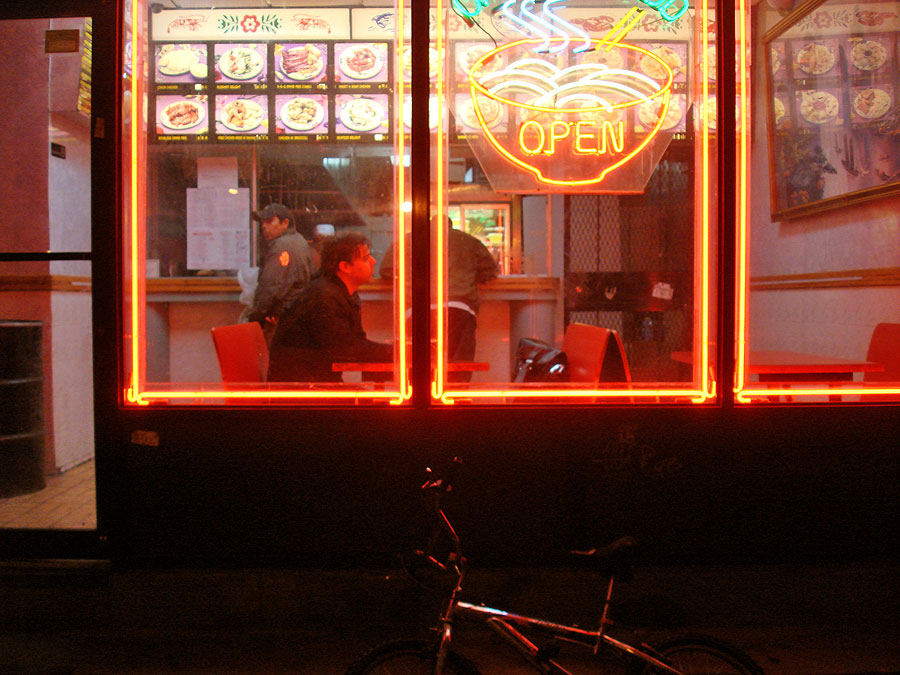
I became something of a local connoisseur, hopping from one takeout joint to another, chasing down the best scallion pancakes, the crispiest sesame chicken, the boldest hot-and-sour soup. Each place had its own charm, its own slight variation on the classics. Some leaned sweeter, others saltier, spicier, crunchier. Some were tiny, fluorescent-lit spaces with handwritten menus in Cantonese taped to the walls; others were fancy and expansive, some were just terrible, and others were sheer joy.
When our family vacationed in Bar Harbor we would always stop at the fantastic China Joy.
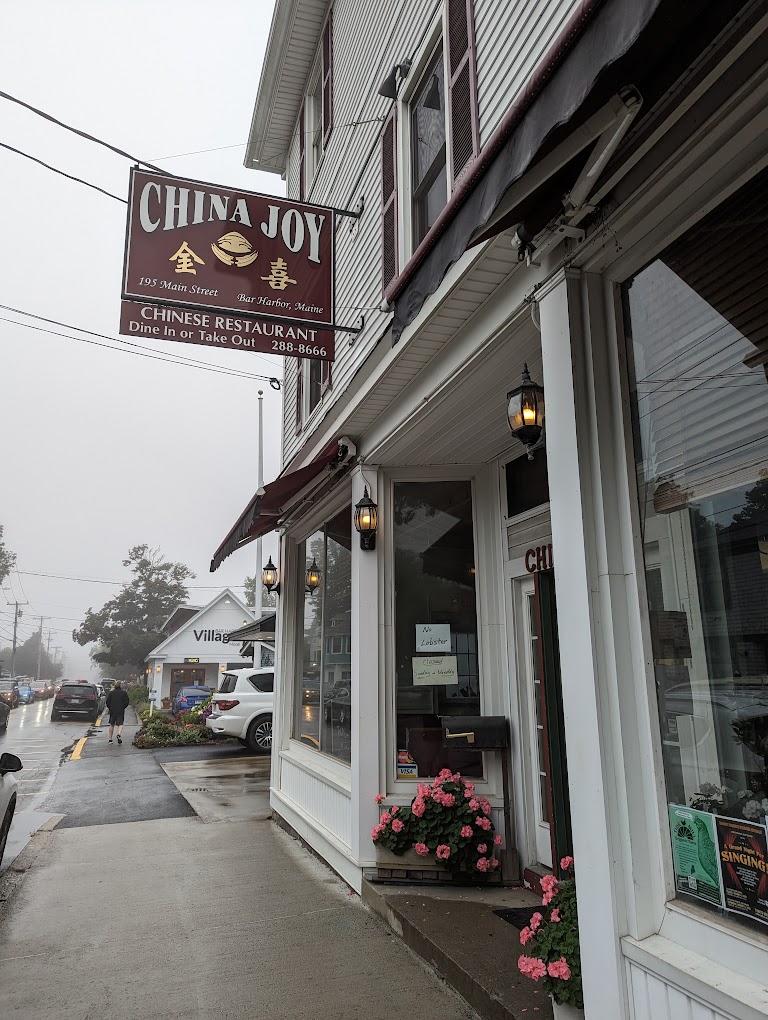
Located in an old house on 202 Main Street, it offered simple Chinese American staples, cooked freshly. But they also had their secret menu, which my sister would order from as if she spoke it fluently – she’d order for the whole table, entire fish dishes, seafood and duck, topped with root vegetables, soups, and of course the scallion pancakes that we would all go wild for. Unfortunately, the building was sold in 2024, and a new restaurant will be going in there in 2025 after decades of being part of the Bar Harbor community.
Back home in New York City my go-to spot, however, was a tiny, unassuming takeout joint in Crown Heights, Brooklyn, called New Sunny.
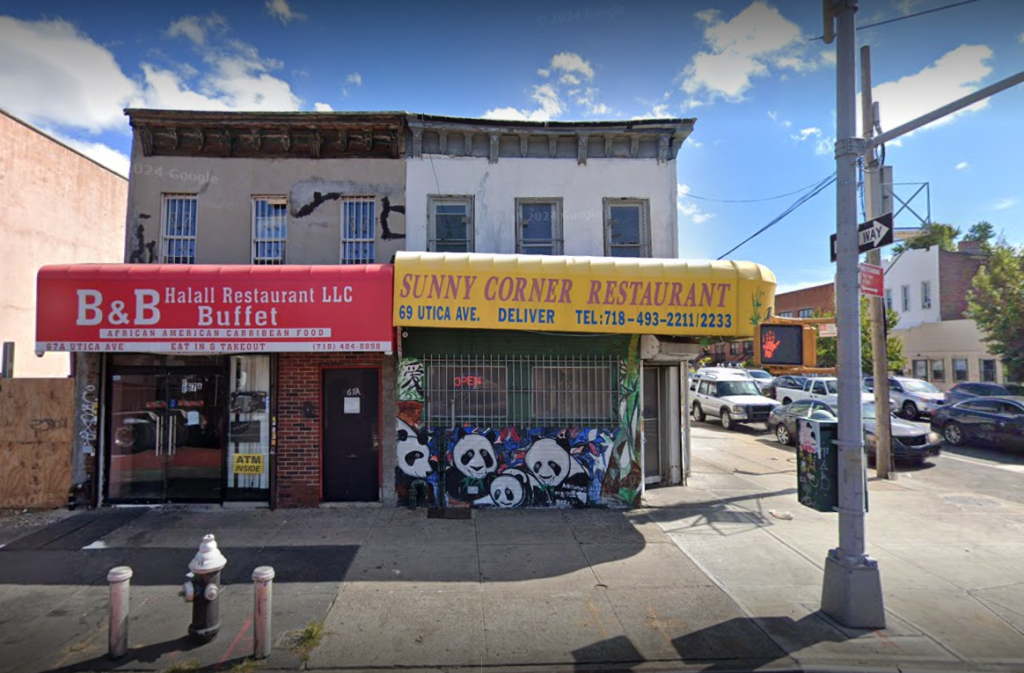
I must have ordered from New Sunny three to six nights a week during my busiest months. Coming home from long shifts at the restaurant my family owned in Queens, exhausted from the crush of the subway, I’d place a call to Lindy, the woman who ran the register. She recognized my voice instantly.
“Hello, you want ginger lo mein tonight?”
“Yes,” I’d say, already smiling, “and an egg roll and wonton soup.”
That was it. No name, no price. She already knew. By the time I walked the last few blocks to my apartment, the delivery man would arrive just as I reached my door, smiling politely as he handed over the familiar white bag, as I gave him the cash with tip. And in that moment, every ounce of tiredness melted away. The first bite of steaming lo mein, tangled in its gingery sauce, was pure comfort. The egg roll, still crisp despite its journey in the paper bag, crackled just right. The wonton soup—salty, savory, familiar, which I would drink like sacred tea—was the perfect remedy for a long day.
It was a different kind of warmth than that childhood night at Hong Kong Buffet, but it was the same in spirit. A simple meal, a quiet comfort, a reminder that sometimes, food is more than just sustenance—it’s home.
And so, in a way, that feeling that began on that rainy winter night—wrapped in the glow of a buffet, hands warmed by cups of tea, plates piled high with golden-fried memories—has never really left me. It has followed me across cities, through different phases of life, always there, always waiting, always welcoming.
Expansion Eastward and the Birth of a National Phenomenon

From the Gold Rush era onward, Chinese immigrants spread out beyond California. By the early 20th century, large numbers of Chinese families and restaurant owners had settled in New York, Chicago, Boston, Philadelphia, and beyond. In big cities, Chinatowns developed into bustling centers of commerce, with restaurant signs often advertising both “Chinese Dishes” and the all-important “Chop Suey” in bright letters.
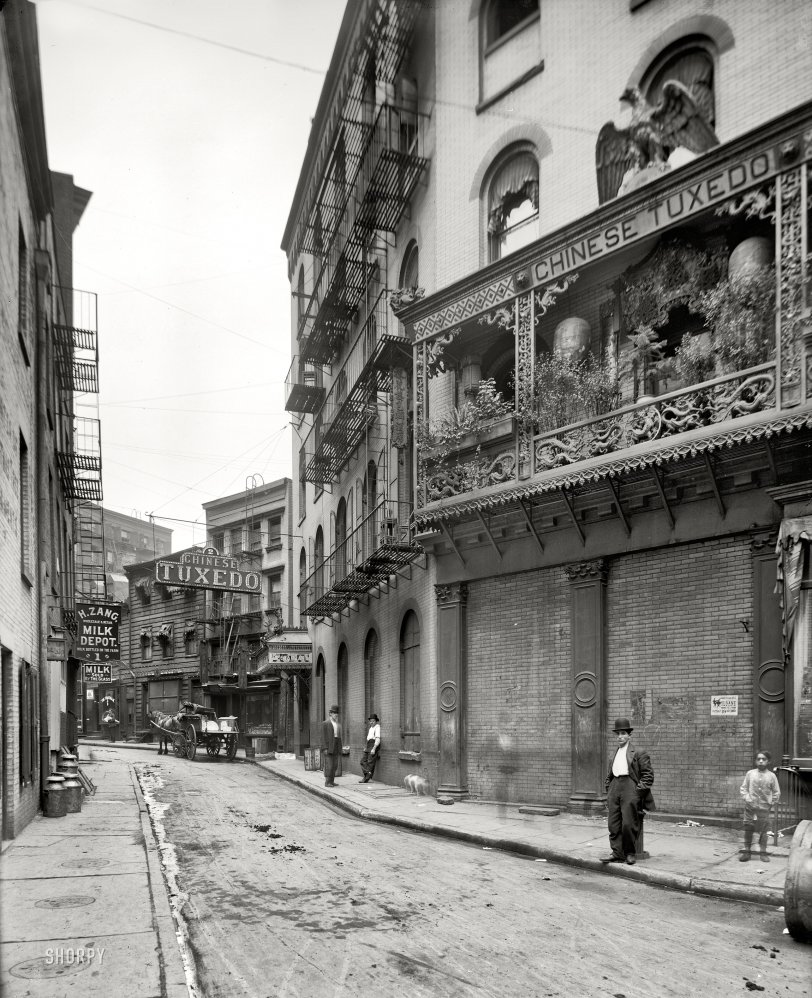
In New York City, Chinese restaurants transformed the culinary landscape, bringing with them cooking techniques—such as stir-frying in woks and steaming in bamboo baskets—and ingredients like bok choy, bean sprouts, sesame oil, and dried mushrooms, none of which were commonly found in American kitchens at the time.
By the 1920s, certain Chinese dishes, especially chop suey, became a national craze, seeping into popular culture. Restaurants in Manhattan’s Chinatown, as well as those in places like Flushing, Queens, began showcasing different regional cuisines, including Cantonese, Fujianese, and eventually Sichuanese.
As immigration laws evolved, Taiwanese immigrants in the mid-20th century also brought their style of cooking to the U.S., introducing new dishes and flavors to the broader American Chinese repertoire. In more recent decades, the influx of Fuzhounese and Wenzhounese immigrants has further diversified Chinese cuisine in places like New York.
Differences from “Traditional” Chinese Cuisine
At some point, the question often arises: how does American Chinese food differ from the many regional cuisines in China? One overarching difference lies in the emphasis on meat. Traditional Chinese food, depending on the region, tends to use more vegetables and often features smaller amounts of protein. American Chinese restaurants, on the other hand, cater to an American palate that frequently prefers larger portions of meat, often battered and deep-fried before being coated in sweet or sweet-and-spicy sauces—think of General Tso’s chicken, sesame chicken, and orange chicken.
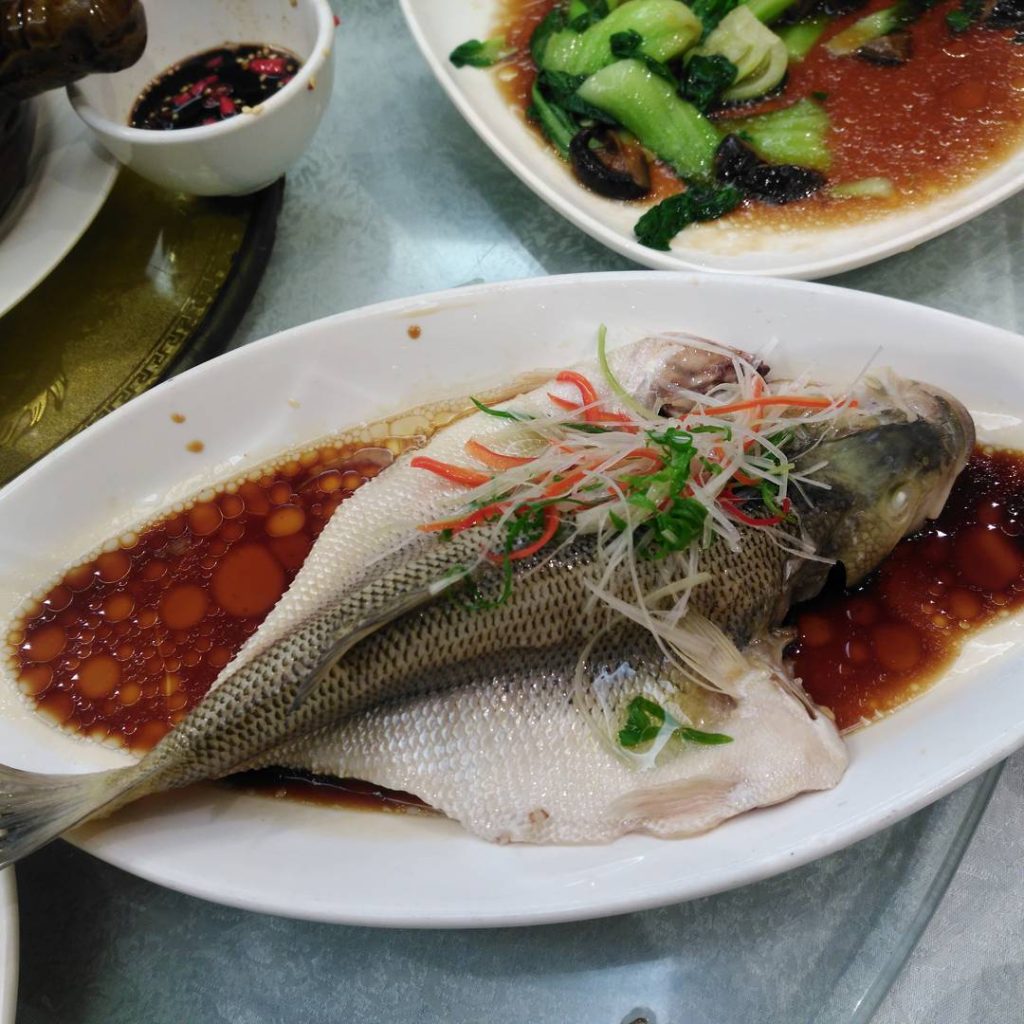
Vegetables common in China—like gai lan (Chinese broccoli) and many Asian greens—are often swapped out for more familiar Western broccoli, carrots, onions, and bell peppers. While Chinese cuisine certainly has its share of sweet flavors, American Chinese restaurants often heighten that sweetness to appeal to local tastes. Hence, the prevalence of syrupy, sticky sauces in dishes like sweet-and-sour pork or General Tso’s chicken.
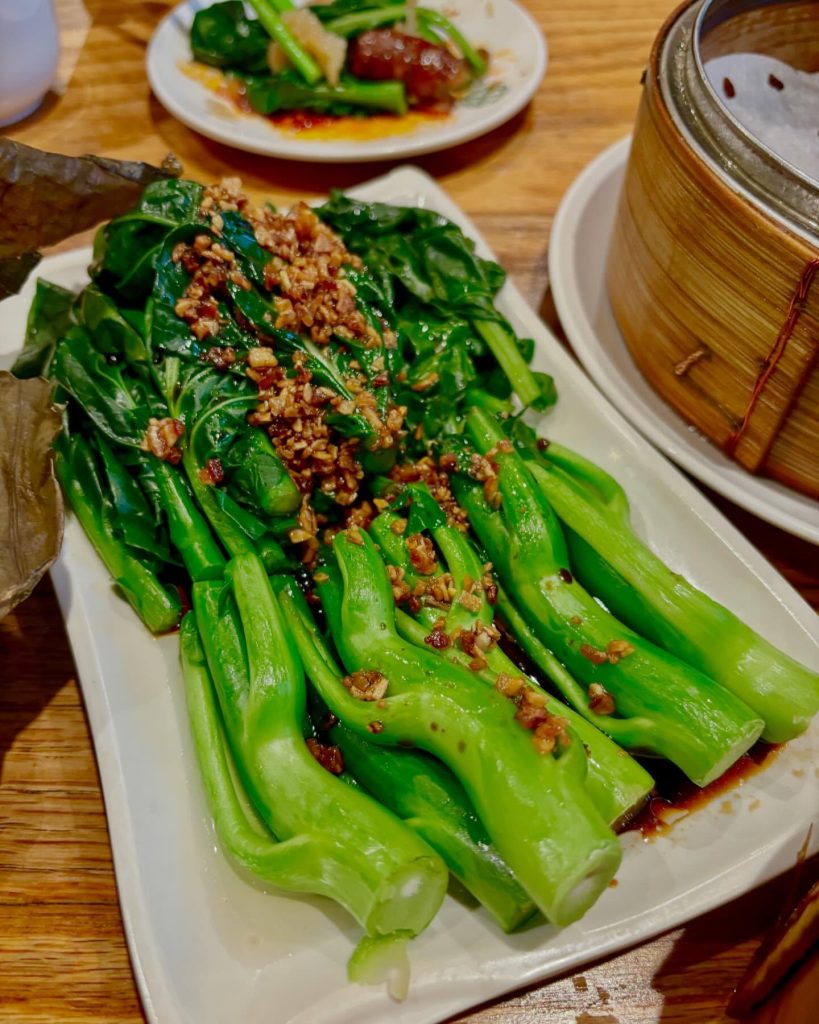
Despite these differences, many restaurants still offer dishes closer to their original forms, particularly where there are substantial Chinese-American or Chinese immigrant communities.
In “split-menu” establishments—where one menu is in English and the other in Chinese—customers might find “Americanized” fare on one list and more traditional fare on the other. Some restaurants have so-called “secret menus” with dishes that might deter unfamiliar diners—chicken feet, pork kidneys, or bitter melon with salted egg, among others.
Buffets, Takeout, and the Ubiquity of Oyster Pails
The takeout culture that so many of us know—where food arrives in those iconic folded paper boxes known as oyster pails—was largely popularized by Chinese restaurants. New York City establishments paved the way for offering quick, convenient meals for busy workers. Later, the concept spread nationwide, eventually evolving into the ubiquitous Chinese takeout and delivery system.

All-you-can-eat buffets, such as my beloved Hong Kong Buffet back in Cleveland, have become another hallmark of American Chinese dining. Buffets cater to a wide variety of tastes, combining crowd-pleasing staples like fried rice, egg rolls, and crab Rangoon with even a handful of sushi rolls or American comfort foods like French fries. This adaptability—along with the allure of bottomless plates—helped American Chinese cuisine maintain its popularity across generations and cultural backgrounds.
Regional Hotspots and Variations
- San Francisco Bay Area. Given its proximity to the original Gold Rush–era Chinese settlements, San Francisco’s Chinatown is the oldest in the United States. Over the decades, the Bay Area has also become home to Taiwanese, Shanghainese, and Sichuanese communities, each influencing local menus. A focus on fresh produce and California’s farm-to-table ethos gave rise to a kind of “California Chinese” cooking, which includes dishes with more vegetables, lighter sauces, and the occasional fusion twist.
- Los Angeles County. The growth of ethnoburbs like Monterey Park, Alhambra, and the broader San Gabriel Valley has made Los Angeles one of the most diverse centers of Chinese cuisine outside of Asia. It is not uncommon to find restaurants specializing in Beijing duck, Xi’an spicy noodles, or hearty dim sum.
- New York City. With one of the largest ethnic Chinese populations outside of Asia, New York is home to multiple Chinatowns (Manhattan, Flushing in Queens, Sunset Park in Brooklyn), each with its own distinct identity. You’ll find everything from hole-in-the-wall Fujianese noodle shops to high-end Cantonese banquets. Delivery services boomed here in the 1970s, with entrepreneurial Chinese students at Columbia University figuring out how to shuttle Szechuan dishes to hungry diners uptown.
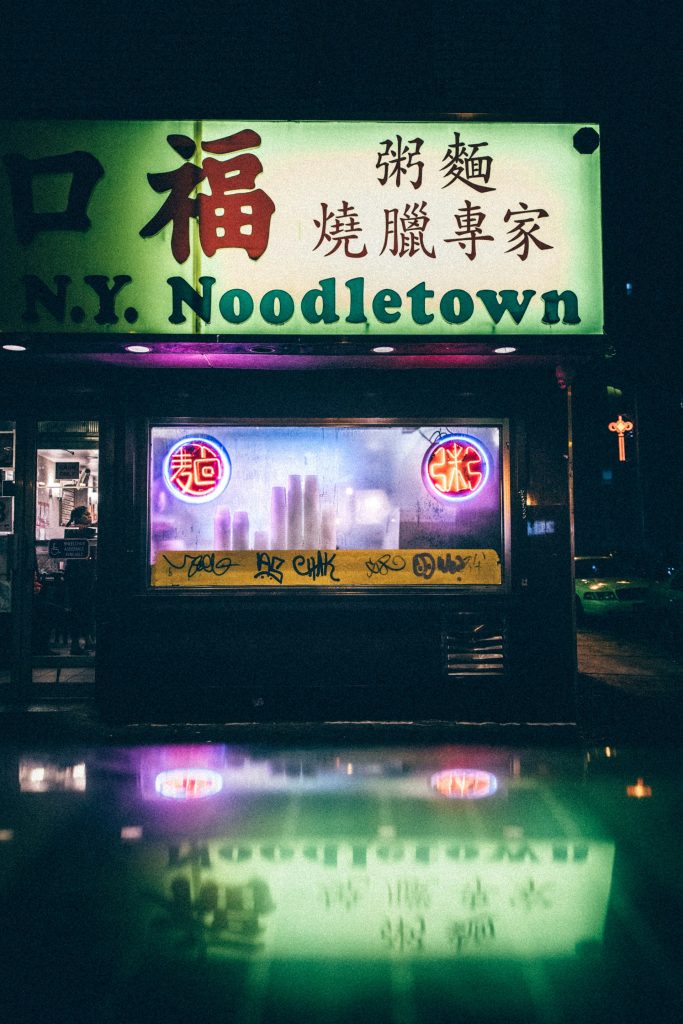
- Boston, Philadelphia, Washington, D.C. Each of these cities has its own Chinatown, shaped by immigrant waves from different parts of China. Boston was famously introduced to Mandarin and Shanghainese cuisine by Joyce Chen, who popularized dishes like hot-and-sour soup and moo shu pork for Americans. Philadelphia’s Chinatown has an increasingly large Fujianese population, while Washington, D.C.’s Chinatown has diversified into the Maryland and Virginia suburbs, showcasing everything from Uyghur to Taiwanese cuisine.
The Role of Family Restaurants
While large city Chinatowns often host well-capitalized restaurants with broad menus, the story of American Chinese cuisine is just as much about the smaller, family-run establishments in suburban or rural areas.

During the Exclusion era and after, many Chinese families who settled far from major urban centers had to adapt to fewer “Chinese” ingredients, limited Chinese-speaking communities, and stoves that were not ideal for wok cooking. Nevertheless, they found a lifeline by serving popular American Chinese dishes: chow mein, chop suey, egg foo young. Children often helped in the kitchen—peeling shrimp, rolling wontons, or washing dishes—while parents worked long hours to keep the family afloat.
In these small-town restaurants, you could just as easily find a hamburger or spaghetti dish alongside “sweet-and-sour chicken.” The fundamental principle was simple: success lay in adaptability.
Many of these family businesses created community landmarks, bridging cultural gaps by introducing “exotic” food to local residents who might otherwise never try anything beyond their usual American fare. That sense of bridging cultures is as significant a contribution to American society as the deliciousness of the cuisine itself.
Cultural Resonance and Continued Evolution
American Chinese cuisine is woven into the fabric of popular culture. Movies and TV shows often depict characters hunched over cartons of lo mein, and references to General Tso’s chicken or egg rolls pepper American pop culture.


The tradition of American Jews eating Chinese food on Christmas Day has become an endearing (and often humorously acknowledged) custom.
These cultural markers underscore the deep connection that this cuisine has forged across ethnic, religious, and generational lines.
In turn, the United States has also influenced China. Chains like P.F. Chang’s have opened branches in major Chinese cities like Shanghai, targeting a curious younger generation of Chinese diners who have seen “sweet-and-sour chicken” on American sitcoms or heard about “fortune cookies” (virtually unknown in China) and want to see what the fuss is all about. In a funny twist, American-style Chinese restaurants can be a novelty in China itself.
Today, American Chinese cuisine continues to evolve.

Younger chefs—some born in the U.S., others who immigrated here—are blending their culinary educations with Chinese tradition. Diners are becoming more adventurous, eager to move beyond orange chicken and crab Rangoon to experiment with flavors like mapo tofu, cumin lamb, or soup dumplings.
The unstoppable popularity of Sichuan peppercorn–infused dishes, for instance, shows that the American palate is expanding to incorporate the numbing heat of Sichuan cuisine. Meanwhile, vegetarian and vegan versions of old favorites are popping up everywhere, reflecting broader societal shifts in how we eat.
Reflections on Taste, Memory, and Community
For me, the essence of American Chinese cuisine will always be about family, survival, comfort, and small gestures that carry great significance—like Lindy at New Sunny recognizing my voice, or my father deciding on a rainy winter night to drive us to Hong Kong Buffet after a movie. Or how as a broke graduate student in New York University, sometimes all I could afford for dinner was three fat and oily pork and cabbage eggrolls for $1. Those are the real reasons why, years later, I still find such joy in a plate of piping hot pepper chicken or a bowl of wonton soup.
Amid debates about “authenticity,” it’s important to remember that American Chinese food has a long, legitimate heritage of its own. While some of its signature dishes may not mirror the plates you’d find in Guangzhou, Chengdu, or Beijing, that doesn’t diminish the sincerity of the community that created them—often under conditions of intense hardship, racism, and legal exclusion. These dishes served as a survival tool, a means of cultural expression, and a beacon of familiarity for Chinese immigrants who missed home. They also introduced countless Americans—my teenage self included—to flavors and cooking styles they might otherwise never have experienced.

In many ways, every dish of American Chinese food is a reflection of cultural exchange and adaptation. It is a testimony to the ingenuity of Chinese immigrants who made the best of local ingredients and overcame numerous challenges to forge lives—and livelihoods—on American soil. It’s about families building restaurants and passing them on to the next generation. It’s about kids—like me—who spent weekend evenings exploring a buffet line as though it were a banquet table, enthralled by the swirl of steam and the dance of sweet-and-spicy flavors.
Ultimately, if there’s a single emotion that I associate with American Chinese cuisine, it’s belonging. Whether I’m in Cleveland with my family, huddled around the old Formica table at Hong Kong Buffet, or recalling those nights in Crown Heights when Lindy would send me ginger lo mein at the end of a long day, I’m reminded of how these restaurants often become extensions of home. They remind us that food is memory and connection—a kind of bond that unites us in the most fundamental way.
Conclusion: Celebrating a Cuisine, Celebrating Ourselves
The history of American Chinese cuisine is one of resilience and reinvention. It began with 19th-century Cantonese immigrants navigating hostile immigration policies and carving out niches in gold rush towns and railroad camps. It flourished with the expansion of Chinatowns across major U.S. cities, introducing new ingredients—soy sauce, bean sprouts, and water chestnuts—into the American mainstream. It persisted through times of discrimination, forging a new identity grounded in an indomitable entrepreneurial spirit. It adapted to local tastes with sweet-and-sour sauces, deep-fried meat, and the occasional fortune cookie.
If you step back and look at it all—across the centuries, across the miles—American Chinese cuisine is a testament to how food transcends boundaries.
To eat at an American Chinese restaurant is to partake in a story of perseverance, ingenuity, and cultural blending. It is a story that belongs to all of us, immigrants and natives, who have ever found solace in a steaming bowl of wonton soup or realized that a few shared plates can bring a family closer together than any grand holiday feast.
On that cold and rainy night of my youth, those stir-fried noodles, that hot tea, and that comforting glow of the buffet lights wove themselves into my personal history. It was, in its own humble way, a celebration of American Chinese cooking. And it continues to be—every time I open that takeout box, every time I find myself marveling at the variety of flavors in a single buffet line, and every time my family sits around a table telling old stories, warmed not just by soup, but by the souls that made our food and those who sit at the table among us.
Please check out these cool sources that I used to write this work:
